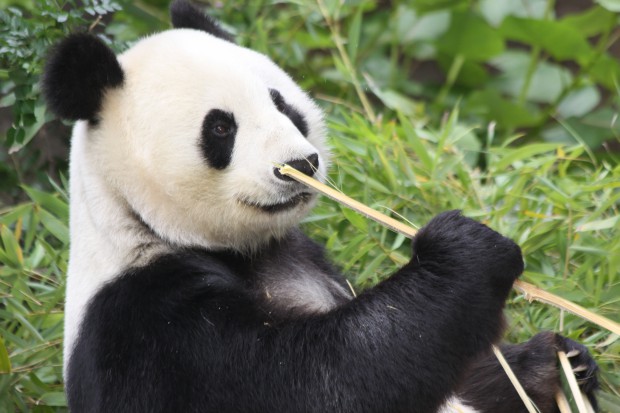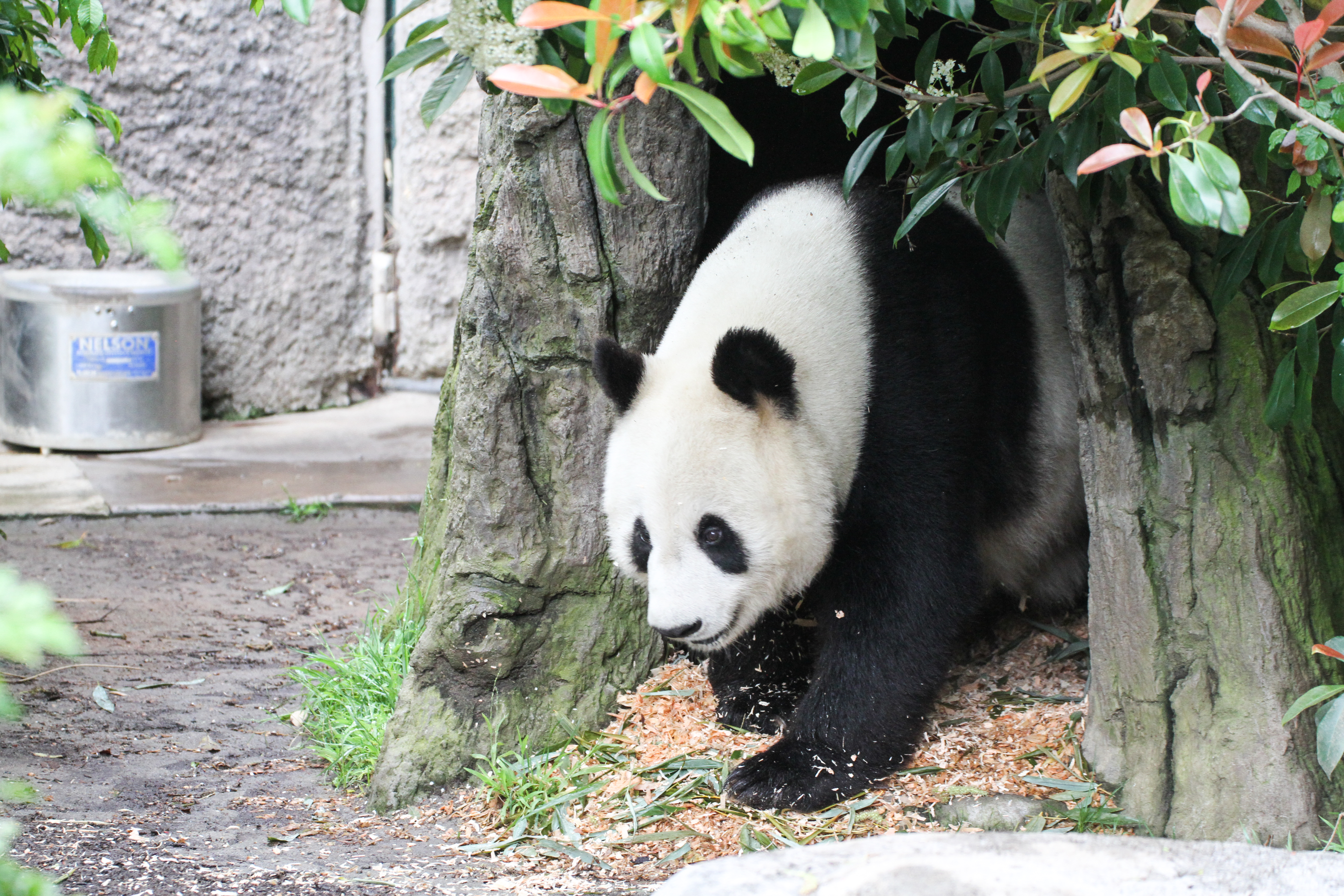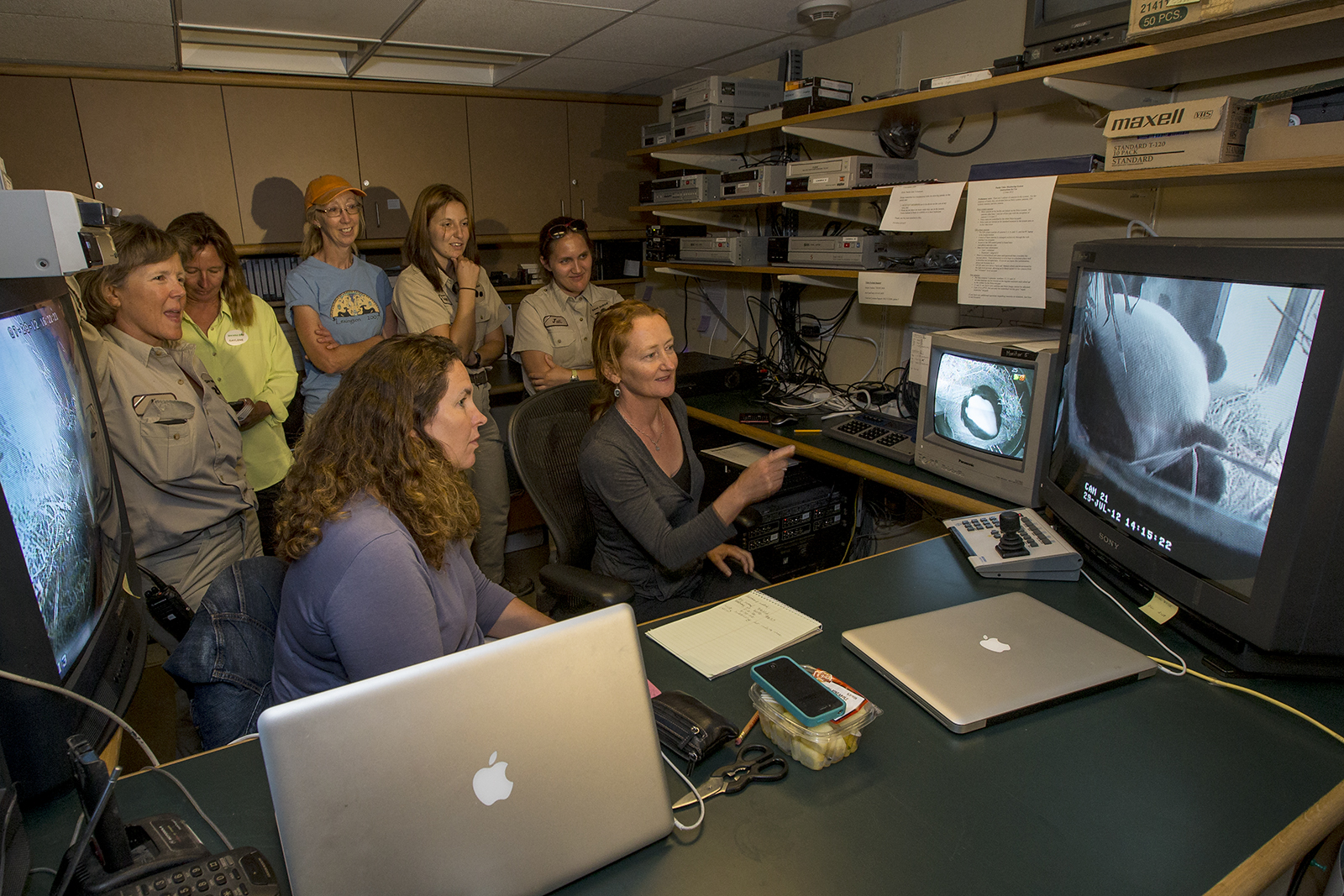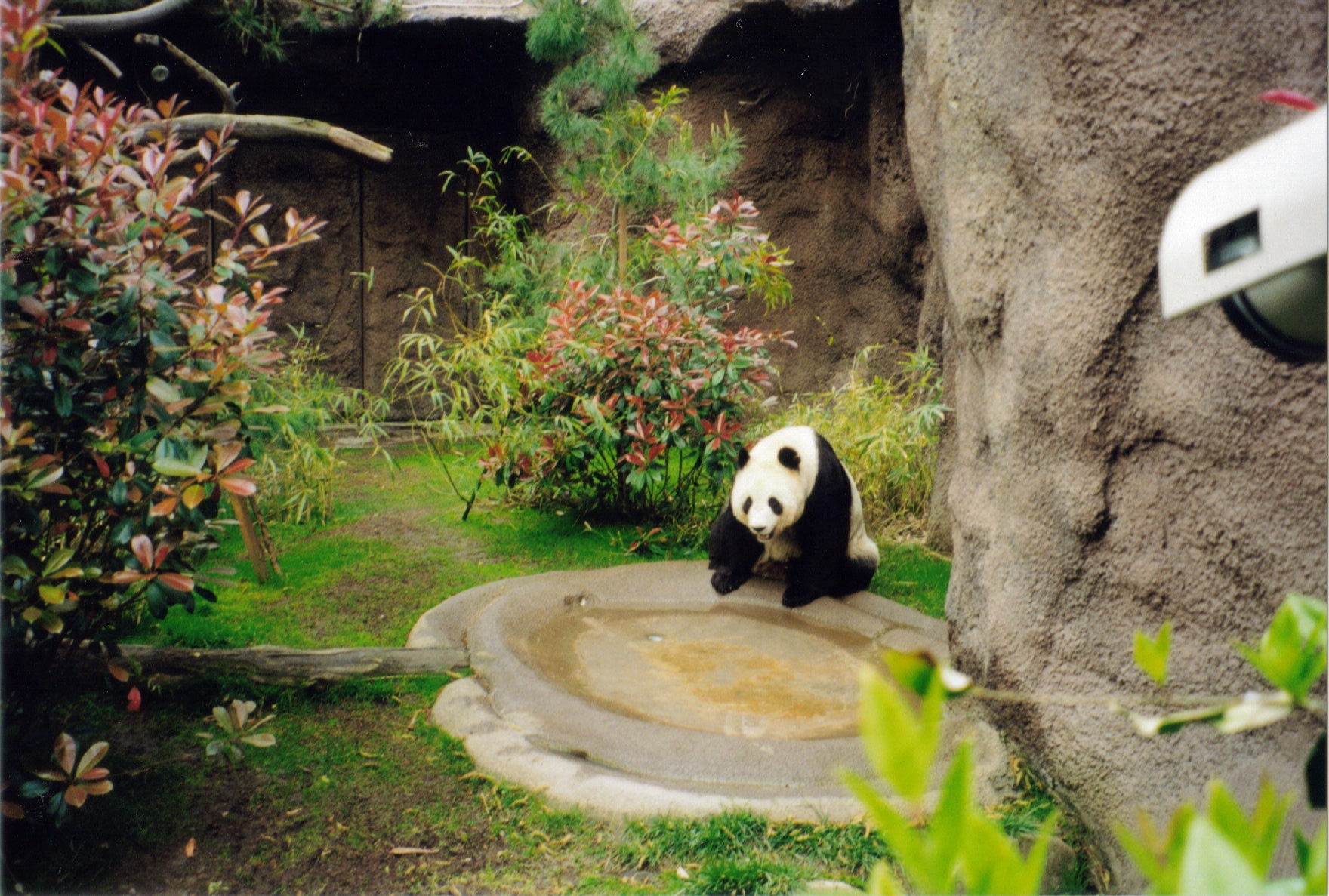Bai Yun surprised San Diego Zoo's panda team
Bai Yun surprised San Diego Zoo’s panda team by coming into estrus on March 10, 2015.
Megan Owen, an associate director in the Applied Animal Ecology Division of San Diego Zoo Institute for Conservation Research, wrote this post:
I have just returned from China, and am happy to say that I had the opportunity to visit Giant Panda research bases at Bi Fengxia and Wolong. While I was most excited to visit with our San Diego-born pandas, we arrived at the Bi Fengxia base in Ya’an to some exciting and unexpected news: Ying Ying, born in 1991, had come into estrus. She bred naturally and had just been artificially inseminated. Amazingly, this was not the only unexpected news I received that day: emails from the Panda Team back at the San Diego Zoo indicated that Bai Yun’s behavior was escalating, as was Gao Gao’s motivation. Could Bai Yun be coming into estrus?
The Panda Team is made up of scientists, animal care specialists and veterinarians. All are experts in their respective fields, and all with years (and in some cases decades) of experience. However, the fact of the matter is, we all take our lead from Bai Yun. Since Bai Yun’s arrival at the San Diego Zoo back in 1996, she has demonstrated ‘text book’ reproductive behavior and physiology. As a result, we have been able to observe the reproductive process in giant pandas in great detail, and have learned much from Bai Yun that has informed our approach to conservation breeding of giant pandas in general.In 2012, Bai Yun was just days shy of being the oldest panda female to have successfully given birth and raised a cub. With that knowledge, we all thought that Xiao Liwu would be Bai Yun’s last cub. However—and as always—it was not up to us. Our plan then, as it has always been, was to monitor Bai Yun closely after she weaned Xiao Liwu, and follow her lead. Thus, in the spring of 2014, we began, once again, monitoring Bai Yun once again for signs of estrus. However, after a few days of estrus-like behavior, all went quiet and we did not have any breeding introductions. Further, because her estrous behavior and estrous hormones did not peak, we did not do an artificial insemination.
As it turns out, Bai Yun likes to keep us on our toes! I can say with confidence that no one on the Panda Team thought that Bai Yun would have a full-blown estrus this year—but that is not up to us to decide! Not long ago, Bai Yun started to show all the classic behavioral signs of estrus, and her hormone profile changed along with it. Scent marking, vocalizations, and tail-up behavior all unfolded in an unambiguous display of estrus. Gao Gao’s interest in Bai Yun was very strong, and he was clearly motivated to breed. When the time was right, Bai Yun and Gao Gao were introduced. While Gao Gao did not appear to be successful in his breeding attempt, the strength of Bai Yun’s estrous behavior and hormone profile indicated that she had indeed ovulated! The breeding season was not over yet.
Shi Shi, the male who came with Bai Yun to the San Diego Zoo in 1996, was a wild born male, and the sire to Hua Mei. He is a genetically valuable male, and semen collected from him years ago is still in great condition. Any offspring from Shi Shi are valuable to the overall conservation-breeding program for giant pandas, and so it was decided to artificially inseminate Bai Yun with Shi Shi’s sperm.
At this point, as always, we will wait and see what Bai Yun does; we will follow her lead, and make sure she has all that she needs. She has a way of teaching us new things all the time, and has continued to make valuable contributions to giant panda conservation efforts. We will monitor her behavior to start with, and eventually we will look for other signs of pregnancy through thermal imaging and ultrasound. And we will share our findings with all of you along the way!
Source: San Diego Zoo










